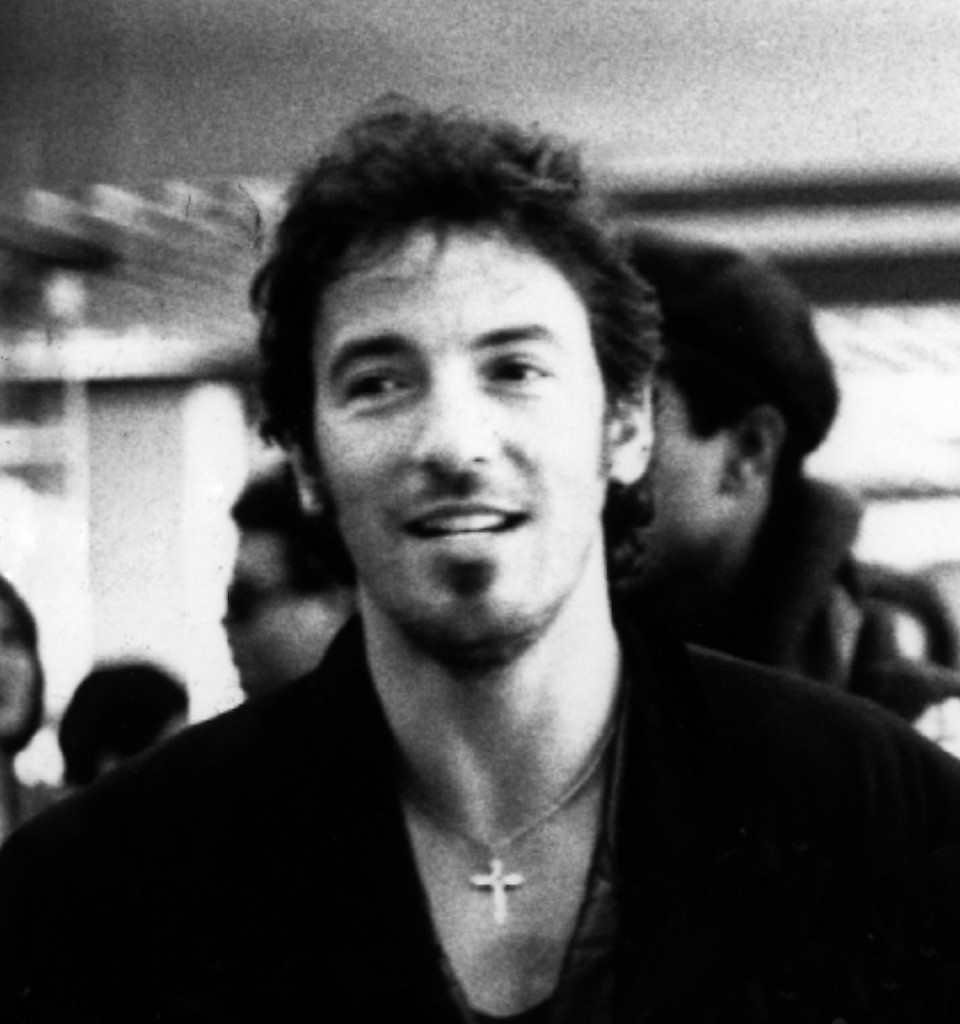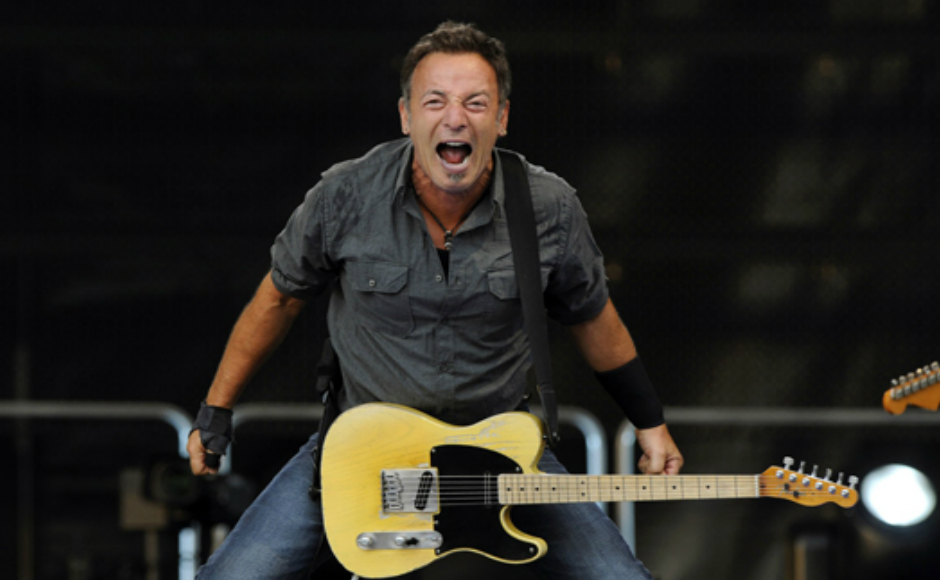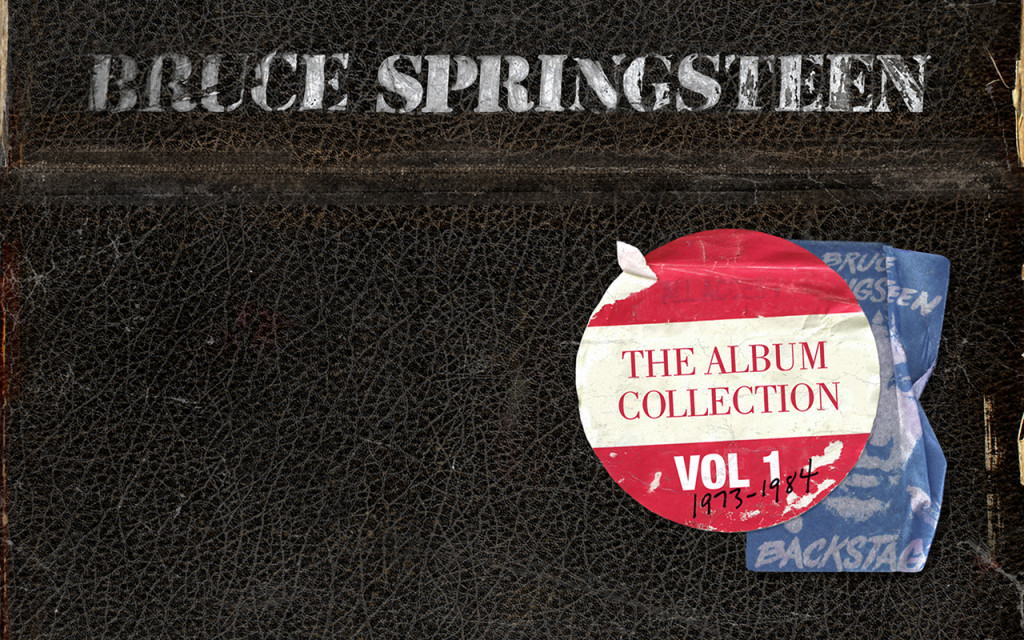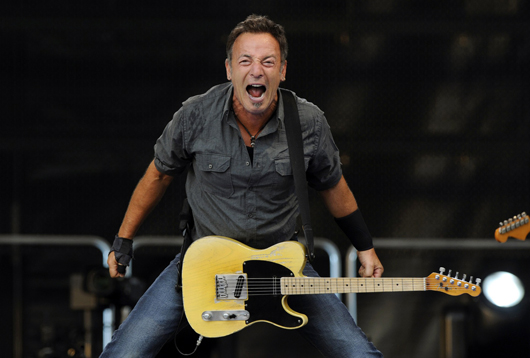A new box set revisiting The Boss’s first seven albums shows it’s tough to separate the legend from the music after a certain point on the timeline.
By Jim Angehr
As with any musical artist who has been big enough for long enough, Bruce Springsteen has become his own musical context.
It’s not just Springsteen songs—it’s Broooce.
The context blocks the reception; his music invariably suffers for it.
And to make matters worse, we live in New Jersey.
You don’t just think of “Thunder Road” and picture Mary twirling weightlessly across the porch and gliding into the front seat.
Instead, you remember the drunk guy at Connie Mac’s who stood on the table and shouted every word in “Thunder Road” until he started bawling two-thirds of the way through, after which he pounded a shot and a beer with a deep and vaguely menacing rue.
As long as you’re not that guy, take notice that Springsteen’s first seven albums were reissued this week in a single box, available in CD or LP formats, as The Album Collection Vol. 1: 1973-1984. All of the albums have been re-mastered; five of the seven for the first time.
People, this is your chance to make things right with The Boss.

“Bruce Springsteen 1988” by Julien_civange_and_bruce_springsteen.jpg: Laura blandderivative work: Beao – Julien_civange_and_bruce_springsteen.jpg. https://goo.gl/YKuSqU.
1973: Greetings from Asbury Park, NJ and The Wild, the Innocent, & the E Street Shuffle
The best way to dive in begins with 1973’s double shot of Greetings from Asbury Park, NJ and The Wild, the Innocent, & the E Street Shuffle.
Forget the Ghost of Springsteen Future and instead commune with the Ghosts of Rock n’ Roll Past.
Consider 1973, if you’re able: the first wave of American rock and roll in the ’50’s was long gone, as were the British Invasion (thank Altamont), and Dylan albums like Self Portrait and Pat Garrett & Billy the Kid showed that he was uneasy beneath the crown.
What you did have, crucially, by the early ’70’s, was almost a full decade of soul and funk in full flower.
But even as those sounds were folded back into rock, Otis Redding was dead and Sly Stone was broken (thank LSD).
Add to that a Civil Rights movement that, for all its progress, felt like it led straight to Vietnam, and the stakes for pop music seemed simultaneously to have raised and fallen.
Correspondingly, rock had retained its swagger but lost the confidence of previous generations.
Take the Broooce goggles off, and you’ll discover that Greetings is a great first album and Shuffle an early career masterpiece. Ironically, even at the very beginning, Springsteen had a context problem, since Columbia, his record label, touted him as the latest entry in the “new Dylan” sweepstakes.
Still, Greetings could never have been a Dylan album, and it’s everything that you could ask of an early ’70’s rock record, and more. It’s streetwise, slyly funky, and world-weary all at the same time. Bruce effortlessly positions himself as a Lou Reed figure who a) strikes less affected poses, b) possesses less book learning, and c) is not an alien life form.
Springsteen would go on to rock harder than on Greetings, but never with more swing. Compare later live recordings of “Spirit in the Night” to the studio original, and all the groove in the gaps is lost. There was magic in those early E Street nights.
The Wild, the Innocent… leans into looser song structures and sharper songwriting, and with spectacular results. (You can find my favorite treatment of it here.) The guitars are turned up, strings are brought in, and the boardwalk is shining bright. In particular, its second side of “Incident of 57th Street” into “Rosalita (Come Out Tonight)” into “New York City Serenade” is as breathtaking a slab of vinyl as you’ll ever hear. These are songs of innocence just before the cool breeze becomes a cold wind.
1975: Born to Run
The next album, 1975’s Born to Run was Springsteen’s first hit record, and the one that made him a national star.
It’s also the point at which Bruce becomes Broooce, which is a problem.
Throughout the two-year recording process of Born to Run, Springsteen and new manager Jon Landau (a former rock critic whose previous fame derived from producing an MC5 album to great opprobrium) spent hundreds of hours discussing rock and roll past, present, and future, including what place they might come to hold within it.
Such are heady thoughts for rock-and-roll punks, and, for better or for worse, Born to Run unfolds, sweating from the weight of its own perceived narrative.
On one hand, it couldn’t have happened any other way: Springsteen became a recording artist just in that sliver of time when rock artists became fully self-aware of their legacies for the first time. (One could argue that bands like The Doors, Velvet Underground, and, in their own way, The Band, were likewise cognizant of their own places in the story, but I’d contend that they were more reflexively reactive than self-locating.)
By that measure, of course, you can see the veins bulging on Born to Run, but by recreating Phil Spector’s wall of sound, explicitly mentioning “redemption” in a redemption song, and recording “She’s the One” in mono, Springsteen was inviting critics and listeners not only to love the album, but also to know why they did.
Beginning with Born to Run, then, this will be the suspension of disbelief that Springsteen requires of his audience: when he belts in the title song, “I want to know if love is wild/I want to know if love is real,” you must understand that Bruce is as serious as the hellhounds on his trail. But also know that he for damn sure didn’t miss Elvis and the Beatles on Ed McMahon. Springsteen fans buy into that demand, and Springsteen haters don’t or can’t.
None of which makes Born to Run a bad album. Just because the chefs want you to know how skilled they are in the kitchen, it doesn’t mean you’re going to get a bad meal. At the time, the august critic Greil Marcus in the original Rolling Stone review of the record observed that “it is a magnificent album that pays off on every bet ever placed on [Springsteen].
“No, you’ve never heard anything like this before,” Marcus wrote, “but you understand it instantly, because this music is what rock and roll is supposed to sound like.”
I dare you to listen to Born to Run and prove him wrong.
1978: Darkness on the Edge of Town
1978’s Darkness on the Edge of Town whittles Born to Run down to the bones. It’s a record that’s leaner, meaner, louder, and more harrowing––a redux of Born to Run after the guy loses his girl, his car, and his job. The characters in Darkness are meeting the devil at the midnight crossroads, armed only with amplifiers. This may be Bruce’s best album.
Darkness as an album forms the perfect chiasm: the LP is bookended by defiance (“Badlands,” the title song), followed by rage (“Adam Raised a Cain,” “Prove it All Night”), then desperation (“Something in the Night,” “Streets of Fire”), and, penultimately, hurt (“Candy’s Room,” “Factory”). Darkness’s center is the side one closer “Racing in the Street,” and the side two opener, “The Promised Land, which may be the album’s weakest song, trading writerly detail for declamation.
“Racing,” however, is the strongest: Quiet and ruminative, this piano-led track––which may be the finest E Street keyboard showcase on record, from the stately piano intro to the double-keyboard-coda fadeout––is a murder ballad without the homicide. Instead, each character slowly and internally ceases to live.
And for all of the ridicule Springsteen has received for relying too heavily on images of cars and highways, “Racing in the Street” represents the best he’s ever used them. Driving nowhere has never felt so universal and so terrifying. (Listen to the lyrics of the bridge and last verse to hear how Flannery O’Connor would have sounded like if she came from Jersey and put short stories to guitar.)
1982-1984: The River, Nebraska, and Born in the USA
The new Springsteen box rounds out with three albums from the early-to-mid-’80’s, namely 1980’s The River, 1982’s Nebraska, and 1984’s mega-seller, Born in the USA. At the turn of that decade, Springsteen began to read more American history, including Nevins and Commagers’ A Pocket History of the United States and Ron Kovic’s Born on the Fourth of July (which would later directly inspire Born in the USA’s title song).
The book regimen plus ongoing conversations with Landau molded Springsteen’s progressive ethos into an articulated liberal credo, and his 1980’s albums reflect a deepening political consciousness that doubles down on the activist underpinnings of the and folk traditions.
Together, from the garage rock of The River, to the bleak and desperate whisperings of the acoustic Nebraska, and finally culminating in the anthemic USA, Springsteen has written a shadow social history of the early years of the Reagan administration––most of which was drowned out in the hype surrounding Born in the USA.
And that’s a shame. The two albums in this collection that would most benefit from critical reappraisal are The River and Born in the USA. (Nebraska, in contrast, has always rightfully been acknowledged one of the best and most important records of the decade.)
At the time, The River’s sprawling, double-album length, plus its emotional range––the title track and “I’ve Got a Crush on You” (chorus: “ooh, ooh, I’ve got a crush on you!”) on the same record?––bewildered critics, while “Hungry Heart,” Springsteen’s first top-ten single, gained the LP legions of new fans, if not careful listeners.
During a period when Bruce’s songwriting would reach the apex of its literary nuance, the rock audience was increasingly less inclined to listen. In retrospect, nearly 35 years after its debut, it’s difficult to keep The River from the short list of best double albums in rock and roll history.
And finally there’s Born in the USA. George Will loved it, Courtney Cox danced to it, everyone bought it, and no one heard it.
Two things, both related to the context problem, were at work. Musically speaking, as the 1980’s trundled its stonewashed and high-waisted jeans into the 90’s, the advent of grunge made 80’s rock look bloated and cheesy. 1980’s Broooce was crushed under the scratchy weight of Kurt Cobain’s scruff, although that’s always the way of rock and roll. You couldn’t mosh, thrash, or slam to Springsteen.
From there, however, as the memory of Springsteen, the Top 40 Artist has faded, and synthesizers and electronica have re-entered the pop vernacular, the now 30-year-old Born in the USA strangely sounds much fresher today than it did 20 years ago. The years have taken it from a place of nostalgia to one of longing.
We can hear with fresh ears the desolation tucked into the cracks of the Springsteen pop sheen. In “Glory Days,” the joke isn’t just on Bruce anymore, and when at the 2014 Concert for Valor on Veterans’ Day, Springsteen followed up an angry, bluesy performance of “Born in the USA” with “Dancing in the Dark,” the latter didn’t feel out of place. People used to say that Bruce is old, but now we are.
Next time I’ll try to get through all of “Thunder Road” at Connie Mac’s without breaking down.
Jim Angehr leads Liberti Church Collingswood and trusts that writing for NJ Pen will make him very rich.





